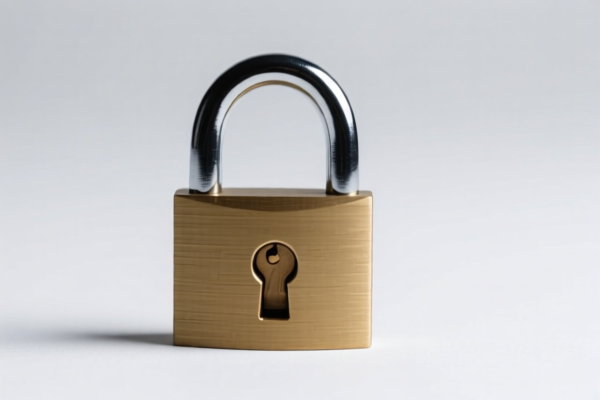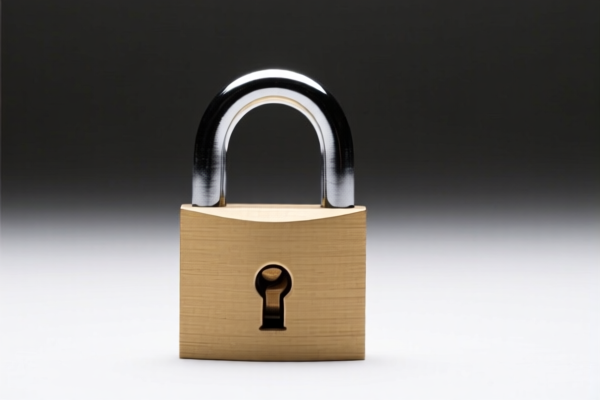| HS Code | Official Doc | Tariff Rate | Origin | Destination | Effective Date |
|---|---|---|---|---|---|
| 7326908688 | Doc | 82.9% | CN | US | 2025-05-12 |
| 7326908688 | Doc | 82.9% | CN | US | 2025-05-12 |
| 7318190000 | Doc | 85.7% | CN | US | 2025-05-12 |
| 7318290000 | Doc | 82.8% | CN | US | 2025-05-12 |




Metal Lock
A metal lock is a security device used to fasten objects, typically doors, gates, or containers, employing a metal body and a locking mechanism to prevent unauthorized access.
Material
The primary material is metal, with common choices including:
- Steel: Offers high strength and durability, frequently used in padlocks and mortise locks. Often coated for corrosion resistance.
- Brass: Provides corrosion resistance and a relatively softer metal, making it less susceptible to damage from impacts. Commonly found in lower-security padlocks and decorative locks.
- Aluminum: Lightweight and corrosion-resistant, used in some padlock bodies and combination lock components.
- Stainless Steel: Offers exceptional corrosion resistance, ideal for outdoor or marine applications.
- Alloy Steel: High strength and resistance to tampering, used in high-security locks.
Purpose
The fundamental purpose of a metal lock is to provide security by:
- Deterrence: Visually discouraging potential intruders.
- Prevention of Unauthorized Access: Physically obstructing entry.
- Protection of Assets: Safeguarding valuables, property, or sensitive information.
Function
Metal locks operate through several core mechanisms:
- Keyed Locks: Utilize a unique key to manipulate internal pins or wafers, allowing the lock to open.
- Combination Locks: Require a specific sequence of numbers, letters, or symbols to unlock.
- Pin Tumbler Locks: The most common type, featuring pins that align with a key’s cuts to allow the cylinder to rotate.
- Wafer Tumbler Locks: Similar to pin tumbler, using wafers instead of pins. Generally less secure.
- Disc Detainer Locks: Utilize rotating discs that must be aligned by a key to unlock. Known for high security.
Usage Scenarios
Metal locks are employed in a wide range of applications:
- Residential Security: Securing doors, gates, sheds, and storage containers.
- Commercial Security: Protecting businesses, offices, warehouses, and equipment.
- Industrial Security: Safeguarding factories, construction sites, and valuable machinery.
- Personal Security: Securing bicycles, luggage, lockers, and other personal belongings.
- Marine Applications: Securing boats, hatches, and equipment in saltwater environments.
Common Types
- Padlocks: Portable, self-contained locks utilizing a shackle to secure an object. Available in various sizes, materials, and security levels.
- Mortise Locks: Installed within a door, requiring a mortise (recessed cavity) for installation. Common in residential and commercial doors.
- Deadbolt Locks: Feature a solid bolt that extends deeply into the door frame, offering high security. Often used in conjunction with knob locks.
- Knob Locks: Integrated into a door knob, providing a basic level of security.
- Combination Padlocks: Utilize a numerical or alphabetical combination to unlock.
- Disc Detainer Padlocks: High-security padlocks resistant to picking and drilling.
- Smart Locks: Electronic locks utilizing keypads, biometric scanners, or smartphone connectivity.
- Cylinder Locks: Utilize interchangeable cylinders for ease of rekeying.
- Lever Handle Locks: Utilize a lever handle to operate the locking mechanism, common in commercial buildings.
Metal locks generally fall under articles of iron or steel. Based on the provided information, the following HS codes may be relevant:
-
7326908688: This HS code covers “Other articles of iron or steel: Other: Other: Other: Other Other”. This is a broad category and could potentially include metal locks if they don’t fit into more specific classifications. The basic tariff is 2.9%, with an additional 25.0% surcharge, increasing to 30.0% after April 2, 2025. A further 25% surcharge applies to steel and aluminum products. The total tariff rate is 82.9%.
-
7318190000: This HS code covers “Screws, bolts, nuts, coach screws, screw hooks, rivets, cotters, cotter pins, washers (including spring washers) and similar articles, of iron or steel: Threaded articles: Other”. If the metal lock incorporates threaded components as a primary feature, this code may be applicable. The basic tariff is 5.7%, with an additional 25.0% surcharge, increasing to 30.0% after April 2, 2025. A further 25% surcharge applies to steel and aluminum products. The total tariff rate is 85.7%.
-
7318290000: This HS code covers “Screws, bolts, nuts, coach screws, screw hooks, rivets, cotters, cotter pins, washers (including spring washers) and similar articles, of iron or steel: Non-threaded articles: Other”. If the metal lock does not incorporate threaded components, this code may be applicable. The basic tariff is 2.8%, with an additional 25.0% surcharge, increasing to 30.0% after April 2, 2025. A further 25% surcharge applies to steel and aluminum products. The total tariff rate is 82.8%.
It is important to determine whether the metal lock contains threaded components to accurately classify it under either 7318190000 or 7318290000. If the lock doesn’t fall into either of these more specific categories, 7326908688 would be the appropriate HS code.
Customer Reviews
No reviews yet.